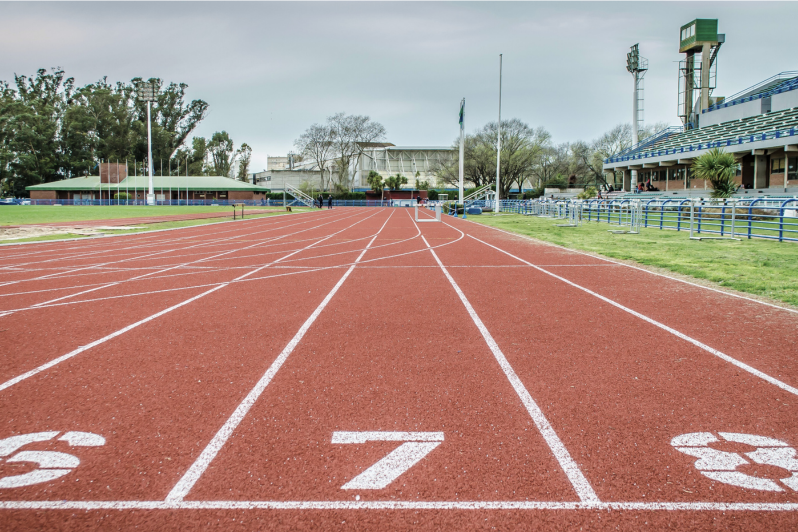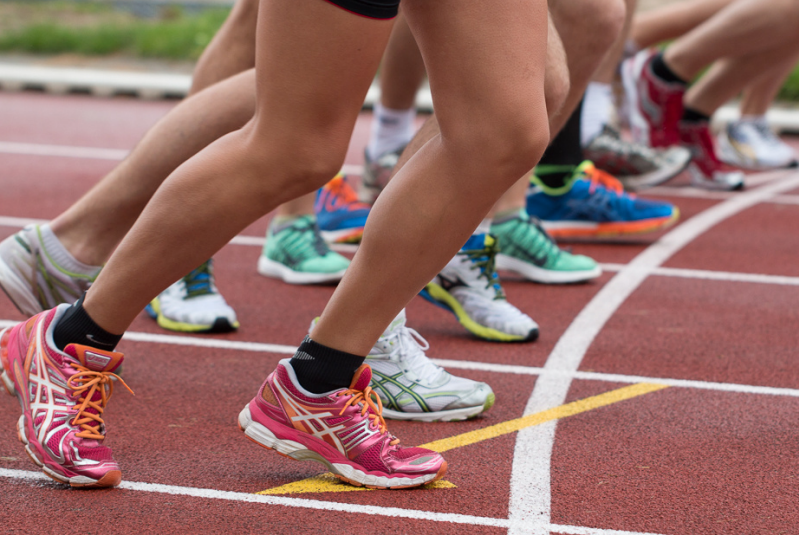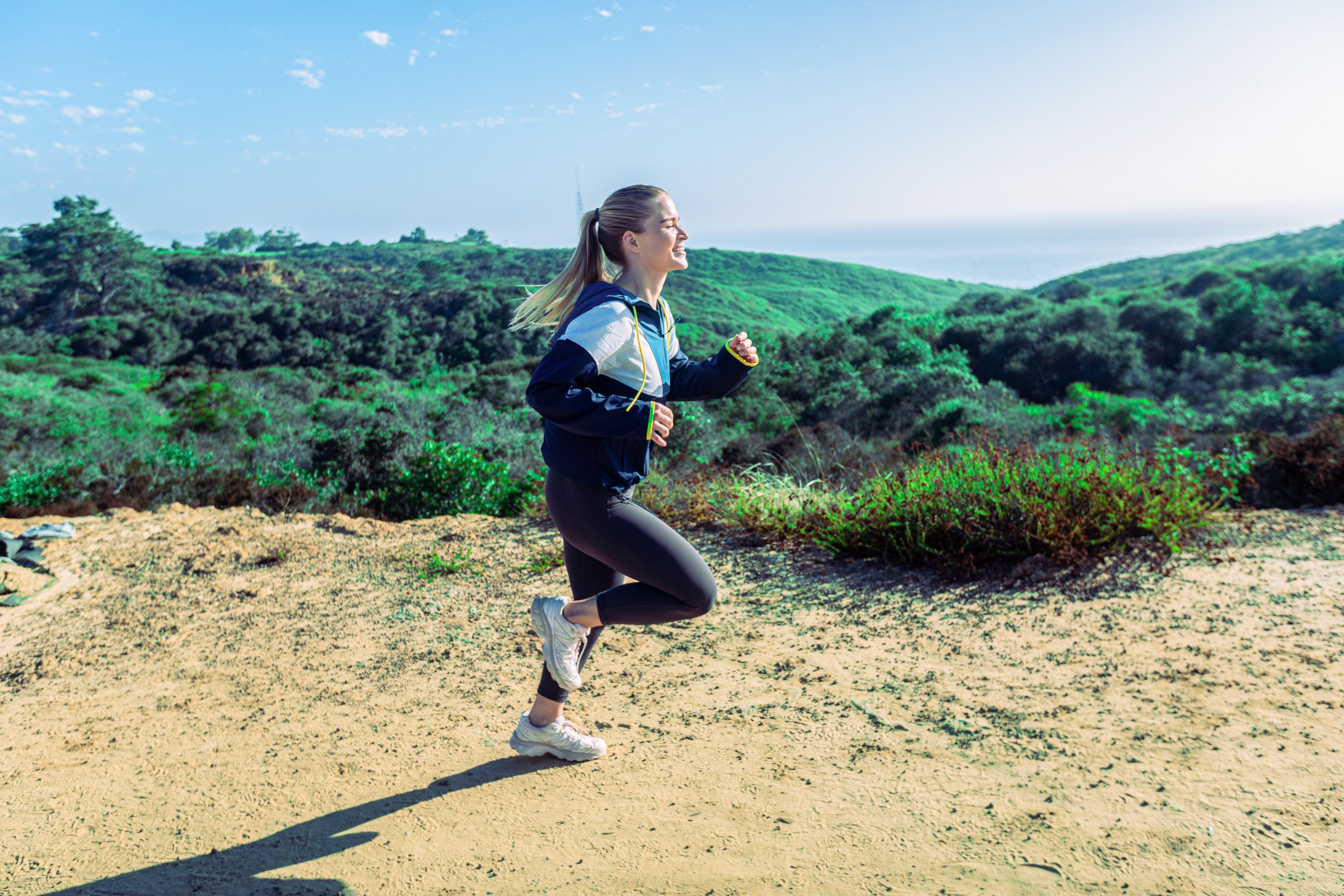Did you know that you can go from scrolling on your couch to a confident runner, crossing the finish line of your first 5k with pride? Whether you’re a complete newbie to the world of running or looking to take your jogging game to the next level, this guide is perfect for you. We created a simple strength training routine that can get you moving and strengthen your body from head to toe, setting the stage for success on the pavement. By following a structured strength training program, you can ensure that your workouts are effective and tailored to your running goals.
Key Takeaways
- Build a strong foundation for running: Strength training exercises help beginners improve muscle endurance, reduce injury risk, and prepare for their first 5K.
- Start small, progress steadily: This program is designed to ease beginners into strength training with simple, effective exercises that build up over time as your running improves.
- No gym required: With minimal equipment like the OmniBands, OmniStrap and bodyweight exercises, you can strengthen key muscles right at home to support your running journey.
The Power of Strength Training for Runners
Before we dive into the specifics of our beginner strength training regimen, let’s talk about why it’s so darn important. You see, running isn’t just about putting one foot in front of the other; it’s a full-body workout that demands strength, stability, and endurance. Without a solid foundation of strength, you’re more prone to fatigue, poor running form, and, worst of all, injuries that can derail your progress faster than you can say “ouch.”
That’s where strength training exercises come in. Just like professional runners follow a meticulously crafted running strength training plan, incorporating resistance training can enhance their performance and keep them injury-free. By targeting key muscle groups involved in running, such as the hamstrings, quadriceps, glutes, and core, you can improve your running form and efficiency and reduce the risk of overuse injuries that can plague even the most seasoned athletes.
The Warm-Up (15 Reps Each, 90s Rest In-Between)
Before diving into the nitty-gritty of strength training, it’s essential to warm up those muscles and joints to prepare them for the work ahead. Here are a few simple yet effective warm-up exercises to get you started:
1. Hip Abduction with the Omnistrap
Safely strap a dumbbell under your foot with the Omnistrap, and stand tall with your feet shoulder width apart. Lift one leg out to the side, keeping it straight, then lower it back down. Repeat on the other side.
This exercise targets the muscles on the outside of your hips, which play a crucial role in stabilizing your pelvis while running.
2. Hip Flexion with the OmniBand
Secure your OmniBand on the lower part of your door, and wrap the other end around your ankles. Make sure there’s tension on the Omniband. Stand with your feet hip-width apart, and lift one knee toward your chest, then lower it back down. Maintaining control of your body weight during this exercise is crucial for proper form and effectiveness. Repeat on the other side.
This exercise helps to strengthen your hip flexors, which are involved in lifting your legs during each stride.
3. Hip Extension
Stay in the same position as the previous exercise, but this time, extend one leg behind you, keeping your body in a straight line and squeezing your glutes at the top of the movement. Lower it back down and repeat on the other side.
Hip extension is essential for generating power and propelling you forward while running.
4. Hip Adduction
Stay in the same position as the previous exercise, but this time, face the side adjacent to the door. Stand with your feet hip-width apart, point your foot sideways toward the door, then return to the starting position. Alternate between legs.
This exercise targets the inner thigh muscles, which contribute to overall hip stability.
The Workout
Now that you’re warmed up and raring to go, it’s time to tackle our beginner strength training circuit. From Nordic curls to resistance band hamstring curls, each exercise is carefully selected to target specific muscle groups and improve your overall running performance. By dedicating time to strength train, you can significantly improve your running performance and reduce the risk of injury. So grab your water bottle, crank up the tunes, and let’s get to work!
1. Nordic Curls
Kneel on a soft surface with your knees bent and your feet anchored under your Nordstick. Ensure that your left knee remains stable and aligned with your body throughout the movement. Slowly lower your upper body forward, keeping your back straight, until you feel your hamstrings engage. Use your hamstrings to pull yourself back up to the starting position.
Perform 2 sets of 3 reps. Make sure you take up to six seconds in your slow descent. Take 90 seconds of rest between sets.
This exercise strengthens the hamstrings eccentrically, helping to prevent injury and improve running speed.
2. Leg Extension
Put on your Omnistrap and safely add a dumbbell under your foot. Sit on a chair or bench with your feet flat on the floor and your knees bent at a 90-degree angle. Extend the weighted left leg out in front of you, then return to the starting position. Repeat on the other leg.
Perform 2 sets of 8 reps. You can also use a resistance band in place of the Omnistrap. Take 90 seconds of rest between sets.
Leg extensions target the quadriceps, which are responsible for knee extension and play a crucial role in maintaining proper running form.
3. Omniband TKEs
Secure your Omniband band on the lower part of your door and loop it around your knees. Squat down with your knees going over your toes. Squeeze your quads and stand up tall.
Perform 2 sets of 3 reps. You can also use a resistance band in place of the Omnistrap. Take 90 seconds of rest between sets.
This exercise helps strengthen the knee joint muscles, reducing the risk of injury. Incorporating exercises like the single leg squat can further enhance your balance and strength.
4. OmniBand Hamstring Curl
Put your hands behind your heels while face down on the floor. Pull your feet to your butt, then slowly lower your feet to the ground. For an added challenge, you can hold a medicine ball at your chest during the exercise.
Perform 2 sets of 3 reps. You can also use a resistance band in place of the Omnistrap. Take 90 seconds of rest between sets.
Hamstring curls target the hamstrings and glutes, improving strength and stability in the posterior chain.
Congratulations on completing your first strength training workout for runners! By incorporating these exercises into your routine, you’re taking proactive steps to improve your running performance and prevent injury. Remember to listen to your body and progress at your own pace.

Begin Your Path to Your First 5K
To continue your journey towards your first 5k, we encourage you to check out our FREE Couch to 5K program. This beginner-friendly training plan, designed by expert physical therapists, combines strength training with progressive running intervals to provide you with a structured path to success. Whether you're aiming for a 5k or dreaming of tackling a half marathon, our program has got you covered.
So lace up those shoes, hit the pavement, and let's turn your running goals into reality, one step at a time. Your journey starts now!
DOWNLOAD THE COUCH TO 5K PROGRAM FOR FREE
Remember, strength training is not just about lifting heavy weights; it's about improving stability, balance, and overall body awareness to enhance your running performance and prevent injury. So, grab your OmniBand, Nordstick, and Nordpad Pro. Find a comfortable space at home, and let's get stronger together. Your first 5k awaits!









































Leave a comment
This site is protected by hCaptcha and the hCaptcha Privacy Policy and Terms of Service apply.